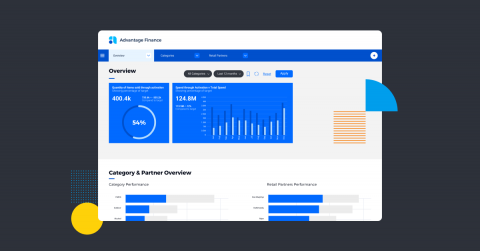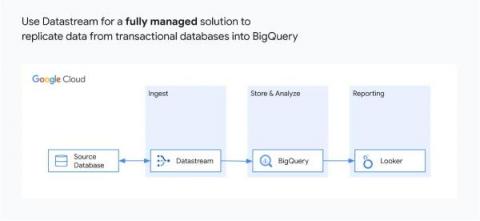Systems | Development | Analytics | API | Testing
Latest News
A Flexible and Efficient Storage System for Diverse Workloads
Apache Ozone is a distributed, scalable, and high-performance object store, available with Cloudera Data Platform (CDP), that can scale to billions of objects of varying sizes. It was designed as a native object store to provide extreme scale, performance, and reliability to handle multiple analytics workloads using either S3 API or the traditional Hadoop API.
Introducing Datastream for BigQuery
In today’s competitive environment, organizations need to quickly and easily make decisions based on real-time data. That’s why we’re announcing Datastream for BigQuery, now available in preview, featuring seamless replication from operational database sources such as AlloyDB for PostgreSQL, PostgreSQL, MySQL, and Oracle, directly into BigQuery, Google Cloud’s serverless data warehouse.
Data Mesh Architecture Through Different Perspectives
DataOps Observability: The Missing Link for Data Teams
As organizations invest ever more heavily in modernizing their data stacks, data teams—the people who actually deliver the value of data to the business—are finding it increasingly difficult to manage the performance, cost, and quality of these complex systems. Data teams today find themselves in much the same boat as software teams were 10+ years ago. Software teams have dug themselves out the hole with DevOps best practices and tools—chief among them full-stack observability.
Adverity is Powered by Snowflake-and Moving into New Markets with Confidence
What’s harder than finding the right data architecture? Finding the right dedicated partner. Adverity gets both with Snowflake. Learn how the two organizations are moving into new markets and supplying even more reliable marketing data to Adverity customers. When a fast-growing SaaS business looks to expand its client base, it normally encounters two major challenges: In many cases, an external data solution provider can only help solve the scalability challenge.
Demystifying Modern Data Platforms
July brings summer vacations, holiday gatherings, and for the first time in two years, the return of the Massachusetts Institute of Technology (MIT) Chief Data Officer symposium as an in-person event. The gathering in 2022 marked the sixteenth year for top data and analytics professionals to come to the MIT campus to explore current and future trends. A key area of focus for the symposium this year was the design and deployment of modern data platforms.
7 Key Benefits of Data Visualization Tools
Chose Both: Data Fabric and Data Lakehouse
A key part of business is the drive for continual improvement, to always do better. “Better” can mean different things to different organizations. It could be about offering better products, better services, or the same product or service for a better price or any number of things. Fundamentally, to be “better” requires ongoing analysis of the current state and comparison to the previous or next one. It sounds straightforward: you just need data and the means to analyze it.
Flex your FitBit stats using OAuth 2 authentication and Talend
We’re back with another Job of the Week – but this time, we’re taking a step back to cover a concept we’ve skipped over in previous segments: OAuth2 authentication. Richard’s demonstrations often show simpler shortcuts to accessing data – but these shortcuts may not always be practical in real-world examples. Never fear! We’ll arm you with the know-how you need to make your data hacks just as impressive in real life.









